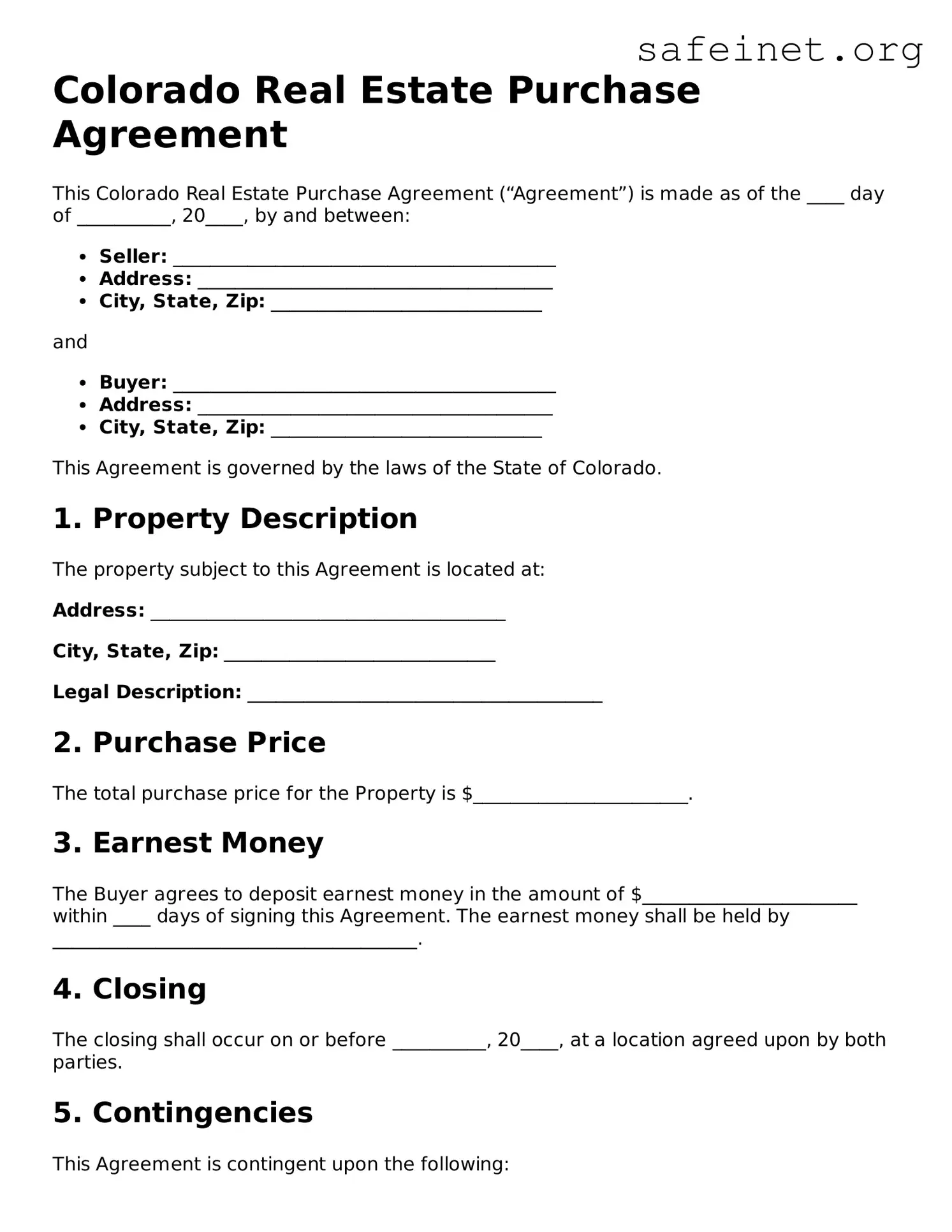The Residential Lease Agreement is an important document in real estate transactions, outlining the terms between a landlord and tenant. Much like a Real Estate Purchase Agreement, it specifies the involved parties, the property details, and the financial obligations. While the purchase agreement is used when buying property, the lease agreement governs rental arrangements, ensuring clarity about rent payments, duration, and maintenance responsibilities.
The Listing Agreement serves as a contract between a property owner and a real estate agent, similar to a Real Estate Purchase Agreement. It establishes the agent's authority to sell the property and outlines the terms of compensation. Both documents are foundational in real estate transactions, providing a framework for facilitating sales and ensuring that all parties understand their rights and obligations.
The Sales Contract is often used in conjunction with the Real Estate Purchase Agreement. This document details the transaction terms once an offer is accepted. While the purchase agreement initiates the process, the sales contract finalizes the commitments, including contingencies, inspection clauses, and closing dates, presenting a thorough understanding of the sale's terms.
The Option to Purchase Agreement allows a potential buyer the opportunity to purchase a property within a specified timeframe. This resembles a Real Estate Purchase Agreement in its identification of parties and property, at the same time providing flexibility for buyers. It enriches the purchasing options and clarifies the terms of the option, including the purchase price and duration.
The Escrow Agreement is a critical aspect of real estate transactions, ensuring that funds and other documents are held securely until all conditions are met. Similar to the Real Estate Purchase Agreement, it defines responsibilities and procedures. This agreement helps to build trust by detailing what happens with money and documents until the sale is finalized, thus protecting both the buyer and seller.
The Seller’s Disclosure Statement complements the Real Estate Purchase Agreement by providing buyers with crucial information about the property’s condition. While the purchase agreement focuses on the transaction itself, the disclosure statement addresses potential issues, such as repairs, legal matters, or environmental hazards. Transparency through this document helps prevent future disputes between the parties.
A Purchase Money Mortgage is a financing document that operates similarly to a Real Estate Purchase Agreement by defining the terms under which a buyer can finance the purchase of a home. It outlines the amount borrowed and repayment terms. This agreement ensures that both the borrower and the lender are clear about their commitments, thus facilitating the buyer’s ability to close the sale.
The Homeowners Association (HOA) Agreement applies to properties subject to an HOA's rules and regulations. It is similar to the Real Estate Purchase Agreement in that it outlines obligations and rights relating to property ownership. Buyers must understand the HOA’s requirements, fees, and restrictions in order to fully grasp what their purchase entails, making this agreement integral to the buying process.
The Land Contract, or Contract for Deed, is another financing option for buyers. It allows sellers to retain the title while the buyer makes payments. Like the Real Estate Purchase Agreement, it defines the terms of sale, responsibilities, and payment schedules. This contract can provide an alternative pathway to homeownership for those unable to obtain traditional financing.
Finally, the Deed serves as the legal document that transfers property ownership from the seller to the buyer, relating to the Real Estate Purchase Agreement. Once all terms in the purchase agreement are fulfilled, the deed is executed to officially complete the transaction. It identifies the parties and property, ensuring that ownership rights are formally recorded and recognized.
